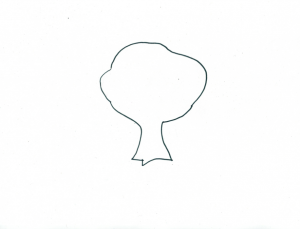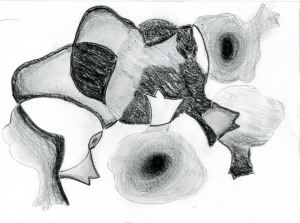In Iqbal’s Complaint and Answer, the symbol of the “garden” is brought up multiple times, mainly to mirror the Islamic world, which is interesting because gardens in the Islamic world usually are symbols of “rest and reflection, and a reminder of paradise.” Therefore in Complaint and Answer, where the speakers speak about times of full bloom flowers versus times of a burning garden, you can evidently tell that the speaker believes either that Islam was at its height or at its low, degenerative form, all by just looking at how the garden is described. In my piece, I emphasize the complexity behind the symbol and the current state of this metaphoric “garden” by taking a basic image of a tree and overlaying them, having them intersect, and shading them in differently. My art piece is also a general response to the overarching theme that we’ve been able to learn from reading all of the texts and background readings and from lectures in class: there is no single Islam! In fact, there are many different versions of Islam that all depend upon who is interpreting it and where it is interpreted. My art piece tries to demonstrate this. In my piece, I take the general outline of the tree and overlay it and shade it in differently. Similarly, “Islam” can be seen as a general outline and backbone to follow, but when put into different contexts (geographical and situational), we see that Islam looks different. We begin to fill in this rough outline sketch of what exactly Islam is in a specific and particular context. The piece is done in black and white not to state that there are only black areas and there are white areas (although there are extremists). Rather, the piece is meant to emphasize the grey areas and to state that there is a complexity to the Islamic narrative that we need to consider when learning more about Islam. It is interesting because when you repurpose the outline of this tree shape, you can see that it creates new figures and new shapes. At many times, the tree is unidentifiable. Similarly, so many cultures have Islam and have repurposed it to fit and make sense within their own cultures (a lesson also vaguely deduced from reading The Suns of Independence. Islam is not simply one tree, (as seen with the tree outline) but the “Islam” name provides an outline for which other cultures and times can fill with to shape their definition of “Islam.” Islam, therefore, is the conglomeration of the mesh of trees represented by the whole of the art piece itself.


Recent Comments